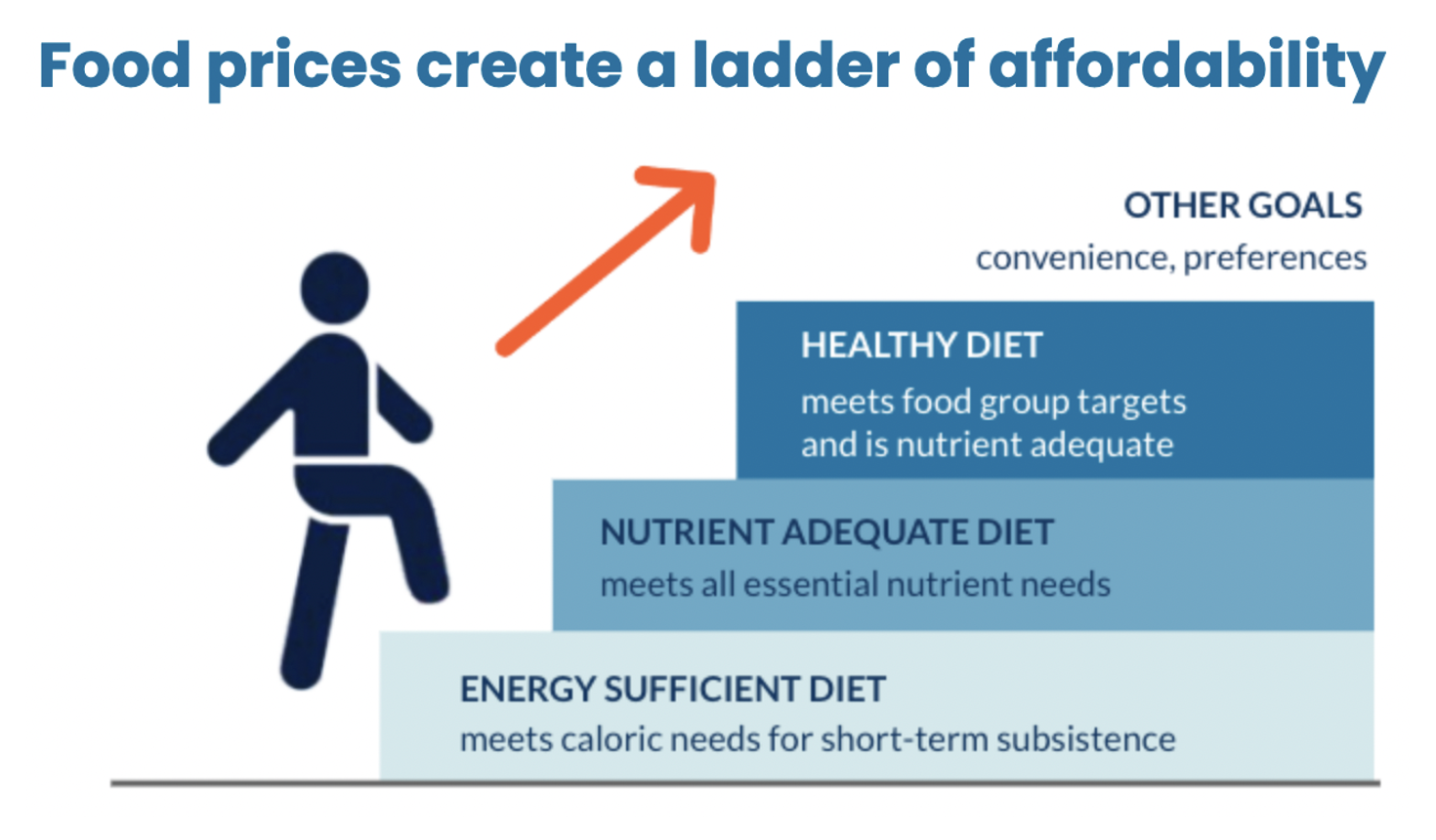High food price inflation—driven by disruptions from the COVID-19 pandemic, climate shocks, and the war in Ukraine—has made the affordability of food and food insecurity top global concerns. Even before the current rise in prices, 3.1 billion people, about 40% of the global population, could not afford a healthy diet, according to the United Nation’s 2022 State of Food Security and Nutrition in the World (SOFI) report. Responding to the current crisis, as well as transforming food systems so they can provide affordable healthy diets for all, requires reliable and responsive data that can inform policies and interventions to address food security and affordability.
The Food Prices for Nutrition project, a new initiative led by Tufts University, IFPRI, and the World Bank, in collaboration with the UN Food and Agriculture Organization, meets this need by providing new food security indicators on the cost and affordability of a healthy diet. These indicators were featured in this year’s SOFI report and present new opportunities for understanding critical challenges in addressing all forms of malnutrition and food insecurity. In back-to-back policy discussions July 14 and 15 at the World Bank and then at IFPRI, policymakers and global food security experts discussed the implications of the new data and the SOFI report, as well as how the indicators can be used to guide food system and agricultural interventions and reduce food insecurity.
The two events were each introduced by project director Will Masters of the Friedman School of Nutrition at Tufts University. In the first event, World Bank Development Data Group Manager Nada Hamadeh presented the new Food Prices for Nutrition Project DataHub, with its associated DataBank, to explain the new indicators and how they were developed. In the second event, that overview was provided by project Co-Director Anna Herforth. The project, they explained, defines a healthy food basket for each country based on common criteria specified in national food-based dietary guidelines. The cost of a healthy diet in the given country is then based on the least expensive foods available on local markets, in quantities needed for the healthy diet basket.
The costs of foods and affordability are calculated based on prices from the World Bank’s International Comparison Program, which provides granular data on the costs of many foods and percentage of incomes spent on food. To assess whether a healthy diet is affordable, its cost in a country is compared to the global average of income spent on food (52%). The indicators produced “provide the opportunity to analyze differences across countries, regions, and income groups,” said Hamadeh.
Global food security experts Johan Swinnen, Maximo Torero, and Aart Kraay (of IFPRI, FAO, and the World Bank, respectively) said these indicators will be a valuable tool for their organizations and others, helping to inform policy and program action to address the high cost and unaffordability of healthy diets in many countries.
Policymakers from Nigeria, Sri Lanka, and Ethiopia noted that their governments are already contributing data to the project and putting the indicators to use at the national and subnational levels, as well as how they will inform more evidence-based policymaking. “There’s a fixation in agricultural policy on yield density but very little on nutritional density, so that part of the story is actually missing,” said Malinda Seneviratne, Director of the Sri Lanka Hector Kobbekaduwa Agrarian Research and Training Institute. The indicators will help move policy to focus on better nutrition, he added: “for that policy shift you need the data.”
At the IFPRI event, speakers dove more deeply into the data provided by the project and how policy analysts and researchers can use these new tools and data in their work. Yan Bai, Economist in the World Bank Development Data Group, explored findings on global variations in the costs and affordability of a healthy diet, while IFPRI Senior Research Fellow Derek Headey noted the project’s advances in understanding diet costs and affordability and how these help to address important policy questions. FAO Senior Economist Cindy Holleman explained how the UN will continue to use these new indicators to monitor the affordability of healthy diets globally.
With the global landscape of food security research and policy continuing to shift to focus more on nutrition and well-being rather than solely calorie intake, speakers agreed on the landmark significance of this new data. At the same time, the data underline the urgent need for stronger policies and interventions to address malnutrition. “When nutrition is a basic need, the world is a lot poorer than we think,” said Headey.
Drew Sample is IFPRI’s Manager of Media Engagement.







